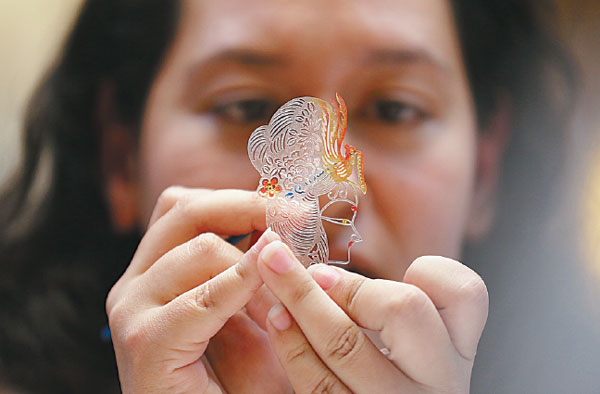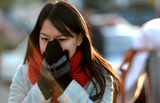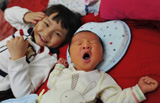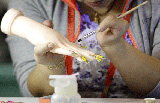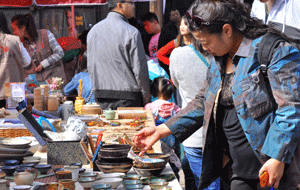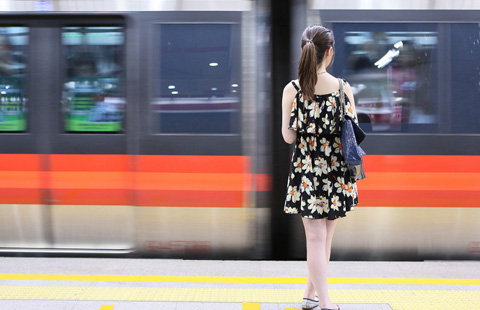Neighborhoods reflect city traditions
By Yang Yao (China Daily) Updated: 2014-12-01 07:32Classic streets increasingly attract tourists, new residents in Beijing
Editor's Note: While the number of Beijing's hutong has shrunk dramatically over the past two decades, the character of the old neighborhoods has continued to evolve, offering an irreplaceable glimpse of the fast-changing city's past. China Daily explores.
Just as the Forbidden City symbolizes China's royal families, the winding hutong in Beijing represent the way of life of the common people.
In old Beijingers' minds, these alleys are their home, and the root of their way of life.
The family of Li Yongfu, 58, a rickshaw driver, has been living in a hutong by the Shichahai area for over five generations.
In his eyes, old Beijing is like a chessboard, with each hutong running north to south or east to west.
"This square layout not only influences our way of life, but also influences our thoughts and actions," he said.
"Hutong and the houses (siheyuan, or 'courtyards distributed evenly'), seclude people from the hustle and bustle of the streets outside, from where you can see the sedimentation of hundreds of years of history. Compared with people living in apartments, the overlap of living space makes people interact more, and thus the sense of community is stronger."
Their daily needs can be satisfied by hawkers who sell groceries, including vegetables, eggs, fruits and snacks. Residents can also get their hair cut by itinerant barbers without walking out of their neighborhood.
"People know each other here and help out as much as they can," Li said.
The winding and narrow hutong are heaven for children playing games. They play rubber-band skipping (Chinese jump rope), shuttlecock kicking and hide-and-seek.
"It is a pity that only 20 percent of the hutong are left now. With the disappearance of hutong, the history, stories and the community are fading," Li said.
However, newcomers and tourists are increasing. In the past 10 years, the number of tourists from around the world visiting Beijing has grown from 18,700 to over 4.5 million.
Hutong are still hot spots for new Beijingers, just as they are for longtime Beijingers.
After old-time Beijingers, the second-largest group now inhabitating hutong are foreigners who are interested in the old Beijing culture.
James Watson-Krips, a 27-year-old US citizen who has lived in hutong in the Paojutoutiao and Dongsishitiao areas, said it was an experience that he wouldn't trade for anything.
"I always found the sense of community and continuity to be extremely admirable. There you'll find people who've spent their whole lives in the same courtyard," he said.
His favorite part of living in the hutong is waking up each morning. Walking past small restaurants, jockeying for position with pedicabs and food carts, and simply admiring the area's stately architecture make each commute a new and fresh experience.
"I think that the hutong shaped the people they've become, and there's definitely something to say for how it's made them more down-to-earth," he said.
"Living here, you're getting the true Beijing experience, feeling the pulse of the city, and immersing yourself in a more traditional way of life more linked to a sense of community. You're also getting to enjoy an urban oasis of sorts, one where the hustle and bustle of China's capital can feel miles away, even if a major thoroughfare is literally just down the street."
To help adapt to the newcomers, many hutong in Beijing are renovated and remodeled to serve more commercial than residential functions.
Pei Wenzhe, the manager of Shichahai Tour, a tourism developer of hutong in Beijing for eight years, said they are trying to restore the fading stories and histories and to show the new Beijingers the authenticity of hutong.
He is currently running the Shichahai Shadow Art Performance Hotel, which highlights the dying folk shadow art.
The lobby is actually a theater. Three nights a week, they have a shadow-puppet master and backstage performers conduct a 10-minute shadow show at 8 pm. The artists then invite everyone, especially children, backstage to see how the show works.
"We believe the true cultural beauty of Chinese heritage should be preserved, and we found a modern way for the world to appreciate true beauty again. Bustling lives mask us from the beauty of nature," Pei said. "Through travel, we refresh our senses about culture and nature. We strive to inject life and cultural forces into our tourist sites."
"We hope that the hotel is the first stop of the cultural expedition; the next one is to explore nature and the Beijing old city from Shichahai for new experiences," he said.
Pei said the hotel's design brings tourists to a lakeside, over the waterfront and into hutong.
"It puts us back on the path to nature, and reshapes our heart to value and to respect the tranquillity that nature and culture give us," he said.
Zhang Wei, 37, who is devoted to recording the changes of hutong as a way of conserving the culture, started a website called "Old Beijing" in 2000.
"All in all, hutong means home to us. It is a symbol of love," Zhang said. "What we do is to pass the love to others, and to the next generation."
yangyao@chinadaily.com.cn
|
A foreign visitor dyes a piece of shadow puppet in the Shichahai Shadow Art Performance Hotel in Beijing. Wang Jing / China Daily |
(China Daily 12/01/2014 page7)
- Database to track fugitives overseas
- Family size violation fees to stay
- Draft plans for regional, circuit courts approved
- Protest founders poised to surrender in Hong Kong
- Taiwan leader decides to resign as party chairman after election defeat
- 154 'foxes' surrender before deadline
- Tolerance ends, HK chief vows
- Expansion of pollution monitoring on the way
- AIDS pandemic has reached tipping point, campaigners say
- Spot corruption, send a text
